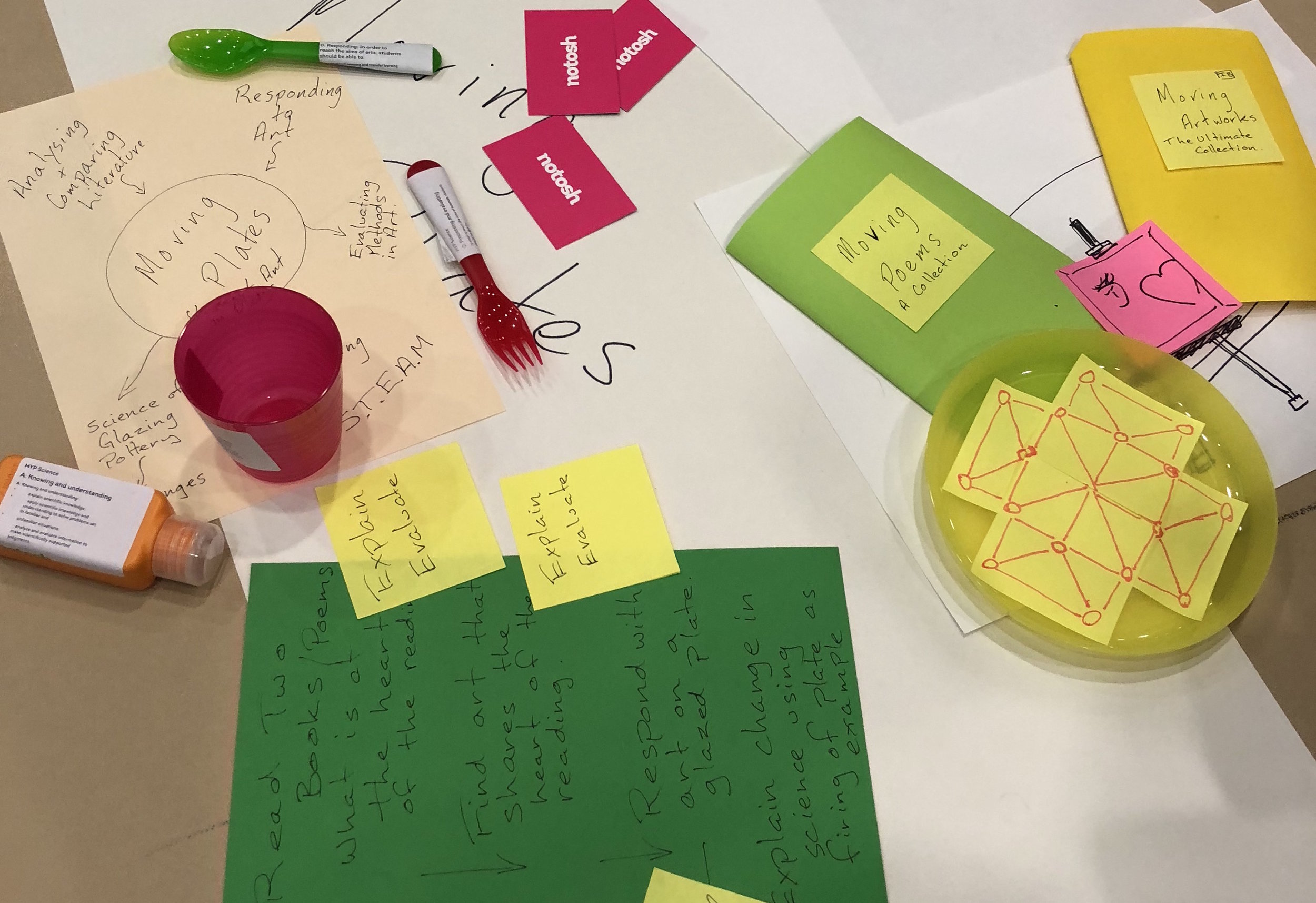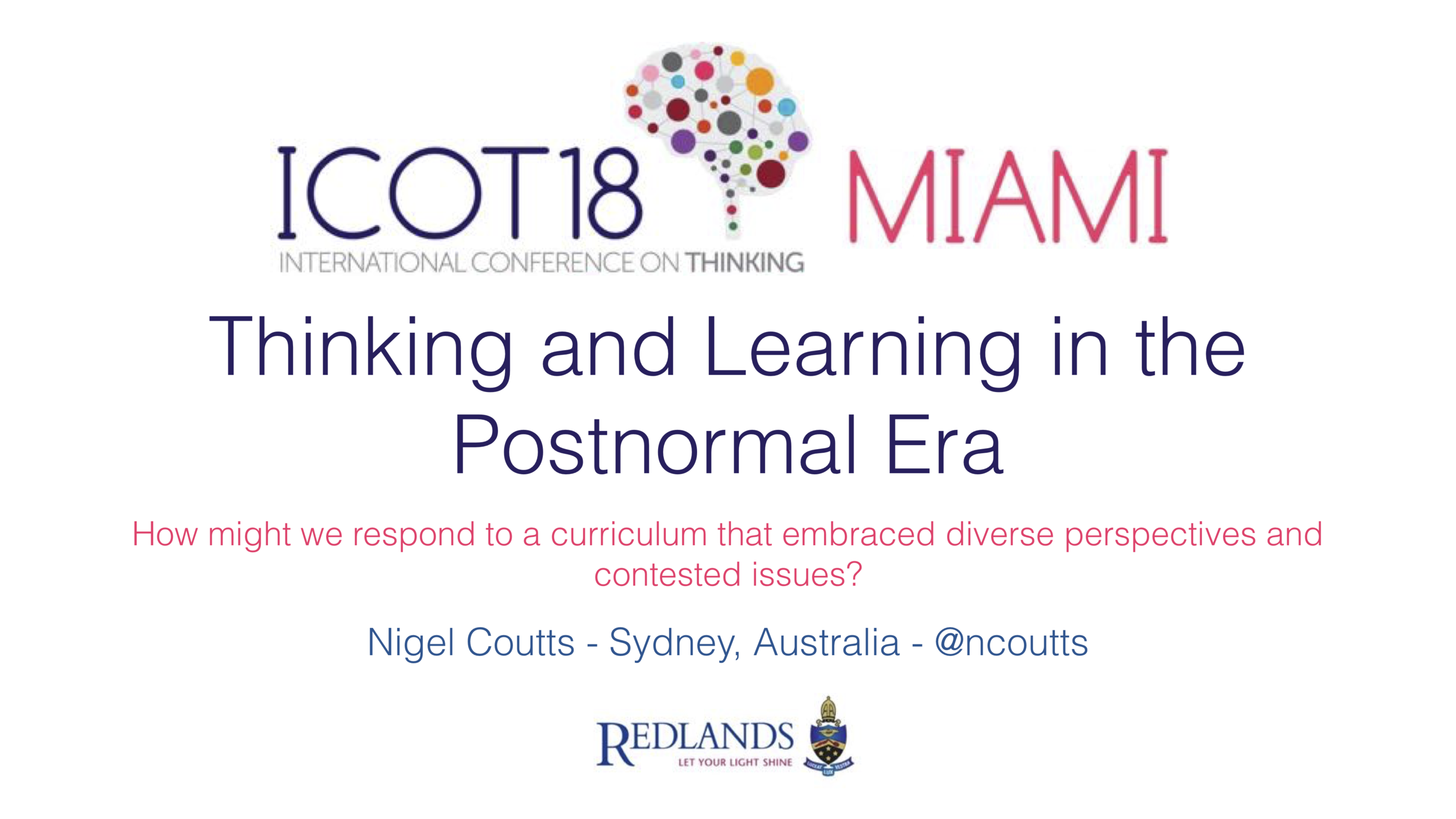According to many STEM or STEAM skills are essential to future success and the prosperity of nations. In these times where technology is increasingly a part of the solution and where understandings of science, engineering and mathematics are central to so many industries this makes sense. But counter to this argument is a growing body of educators who point to the significant role that the humanities have in producing young people who are empathetic and aware of the social aspects of the modern world. They argue that a focus on STEM pathways ignores the human elements of change, the interpersonal and societal power relations that shape our society. What path then should schools take in planning to meet the needs of our learners and to what degree should the needs of the economy shape our curriculum?
Much of this debate arrives from observations that we are facing a time of unprecedented change. Volatility, Uncertainty, Complexity and Ambiguity (VUCA) are to be the norm and the pace of change is set to accelerate, we in what has been termed ‘the age of accelerations’. In an effort to make sense of this world, the OECD has identified three mega-trends which are shaping this change; globalisation, technological progress and demographic change. Each of these trends alters the nature of our societies and so we must also manage the changes that they induce in areas parallel to their immediate sphere of influence. Factors such as automation and globalisation of markets and workforces will place pressures on our workforces and change what skills are most valued. Some professions will disappear altogether while others will be transformed. Any work that is routine, repetitive and machine learnable is likely to be relegated to the pages of history while careers involving non-routine cognitive skills are set to expand. While economists predict that our economies are likely to expand as a consequence of all this change, it is uncertain as to how many people this new economy will require or if we will be able to prepare our young people to thrive in this new work-order.
The term “Great Acceleration” was coined by scientists to capture the holistic, comprehensive, and interlinked nature of all the changes simultaneously sweeping across the globe and reshaping the human and biophysical landscapes of the Earth system. (From “Thank You for Being Late: An optimists guide to thriving in the age of accelerations by Thomas L. Friedman p10)
The Organisation for Economic Cooperation and Development identifies the need to prepare young people for times of constant change in environments laden with technology.
Prepare young people for the jobs of the future by ensuring that they are equipped with the right type of skills to successfully navigate through an ever-changing, technology-rich work environment, (OECD - Future of Work & Skills - 2017)
To many, this process involves developing STEM skills and dispositions. According to ‘The Innovation Policy Platform’, a group within the World Bank Group, 'Increasing students’ participation in STEM remains a primary component of policy measures to strengthen education for innovation.’ Economists at PwC state that 'Australia needs a STEM capable workforce if we are going to continue to prosper in an increasingly complex and competitive world.’ Indeed there is a close affiliation between papers addressing the importance of STEM and those which point to needs for an innovative workforce. There is also some evidence that STEM careers have tangible benefits for the individual as reported by ‘Education Technology’ citing research by ‘Institution of Engineering and Technology’ who 'found that those who’ve pursued STEM in their education or career earn more, get on the property ladder quicker and save more than those who haven’t pursued STEM subjects.’
Another line of thinking is that the skill set most required in our future will be that of the entrepreneur. While in the short-term STEM skills might be in demand, it is not certain that this trend will continue. We may always need some scientists, technologists, engineers and mathematicians but there are many routine tasks within these careers which will be subject to automation. Coding, data analytics, structural analysis, quantity surveying/estimates, repetitive laboratory tasks are just some of the STEM careers which are likely to diminish as machines and artificial learning moves in. It is not that there will be no need for humans in these roles, but the number required is bound to decline and this is most likely to impact entry level positions.
What becomes important then is the skill to exploit emerging opportunities in a constantly shifting market. This requires a capacity to see opportunities where others do not and then take decisive action to maximise the return available before the market shifts again or others move in. To this end there is an emerging trend towards teaching the skills of entrepreneurialism in schools and colleges. This goes beyond teaching problem finding skills, creative or innovative thinking to include the specific skills required to transform an idea into a business opportunity. Indeed, in the spirit of entrepreneurship there is a growing marketplace for those who are looking to sell ‘Entrepreneur Education’ programmes to schools.
The common thread to much of this debate is that schools are seen as places which prepare the next generation worker. In this discourse, Education is absorbed into the machinery of the economic system and has a part to play in assuring the continued growth of our economies, even if that means preparing individuals to be the makers of their own destinies as may be the case for entrepreneurs. This economic imperative driving education is important and to some extent unavoidable. After all we hope that our young people will have secure futures beyond their time at school and at least in part this demands financial security.
But only in part. There are hopes and wishes for the future world which are not readily measured in economic terms or served directly by participation in the workforce. There are many pressures confronting our society which require understandings that have little to do with STEM disciplines or entrepreneurialism.
2016 was a landmark year for the VUCA world. In June of 2016 the United Kingdom voted to leave the European Union and in November the United States elected businessman and reality tv host Donald Trump as president. While these events are perhaps not the origin moments of what has been termed the ‘Post Truth’ era these two points in history illustrate clearly that we have entered a time where truth and opinion are interchangeable terms. The democratic traditions and rule of law upon which our modern western society was built are increasingly under attack. Amidst this political turmoil we face rising threats from global warming, societal change through immigration and an expanding refugee crisis, and with it all, threats to our values and human rights. To some there is a growing pattern of actions and discourse that is reminiscent of our darkest days prior to the breakout of total warfare and the rise of fascism.
How should education respond to these threats and how might we best prepare our students for this world? STEM and entrepreneurialism have little to offer here. What our students require are the understandings developed most capably by the humanities. An ability to interpret our history and use that understanding to shape our present. An awareness of political discourses and a disposition to speak truth to power. An empathetic understanding of ‘otherness’ and a desire and capacity to read the stories of our individual and collective humanity. The ability to create and sustain a movement driven by a desire to make the world we share today a better place for all and for those who will call it home in futures yet to be imagined. To know who we are, where we have been and how we might shape where we are headed.
By Nigel Coutts
For more on the "Post Truth Era" read:
Matthew D’Ancona (2017) Post Truth: The new war on truth and how to fight back. Bury Press; London















